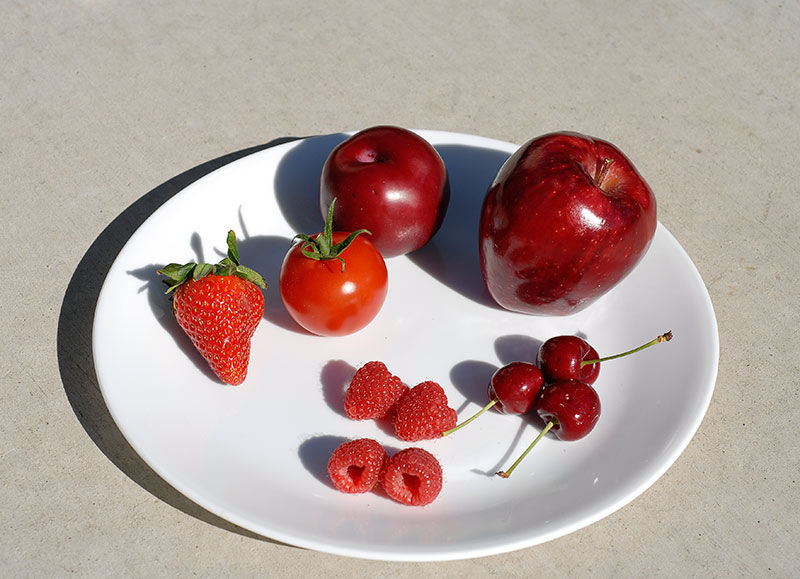Do men and women have the same ability to see red? The answer might shock you.
Few phenomena are more remarkable or complex than the sensation of color. It pervades every moment of our lives, from the red-orange of sunrise to the depths of our dreams. Even our emotions reflect the sensation of color. We "feel blue," grow "green with envy" and "red with anger." A recent discovery sheds important light on one aspect of human color vision – that of seeing red.
It has long been known that men suffer color blindness at greater rates than women. While some eight percent of men are afflicted by this malady, color blindness occurs in but 0.5% of women. Despite these numbers, we always took solace in the fact that, among color normal individuals, there were apparently no important differences between the abilities of men and women.
Not so fast, says Brian Verrelli of Arizona State University and Sarah Tishkoff of the University of Maryland. According to their study published in 2004, even men who aren't color blind may see the world differently than women. And guess who picked the short straw? That's right, guys, it's us. Seems those old stereotypes about women having a superior sense of color may be true after all.
 Figure 1. Does the often-superior red sensitivity of women's color vision result from a need to distinguish edible from poisonous fruit? And should wholesale ruby dealers now be considering hiring more women?
Figure 1. Does the often-superior red sensitivity of women's color vision result from a need to distinguish edible from poisonous fruit? And should wholesale ruby dealers now be considering hiring more women?
Photo: R.W. Hughes; fruit: Joan Allen
The scientists focused on a gene that allows humans to see red, a gene found only on the X chromosome. Variations in this gene can allow expanded color vision. Since men have only one X chromosome compared to the two women possess, they get one less crack at this expanded vision.
According to a recent article:
Brian Verrelli of Arizona State University and Sarah Tishkoff of the University of Maryland analyzed genetic data from 236 people from around the world. Specifically, they studied a gene on the X chromosome known as OPN1LW, which codes for a protein that detects visible light in the red spectrum. Exchange of material between this gene and a neighboring gene associated with green light leads to a high amount of genetic variation but can result in color blindness if the process goes awry. Among the study participants the researchers found 85 variants of the gene. "That's approximately three times higher than what you see at any other random gene in the human genome," Tishkoff says. "Usually it's a bad thing to have too much change in a gene, and natural selection gets rid of it. But in this case we're seeing the reverse."
Sarah Graham, 2004
Variation in Color Vision Genes May Have Helped
Humans See the Fruit for the Trees
Such variations have been preserved throughout evolution and are thought to be beneficial. The two scientists speculate that it might have begun in the prehistoric era, where acute color vision was of use in separating poisonous crimson berries from their edible burgundy cousins. Since women did much of the gathering (while men did the hunting), women developed better red sensitivity.
The lesson here is obvious to us: let your wife or girlfriend pick the rubies.

References
- Verrelli, B.C. and Tishkoff, S.A. (2004) Signatures of Selection and Gene Conversion Associated with Human Color Vision Variation. The American Journal of Human Genetics, Vol. 75, No. 3, pp. 363–375 <https://secure.jbs.elsevierhealth.com/action/cookieAbsent?code=null>.
Note
Thanks to Donald Allen for suggesting the above article.
About the authors
Richard W. Hughes is one of the world’s foremost experts on ruby and sapphire. The author of several books and over 170 articles, his writings and photographs have appeared in a diverse range of publications, and he has received numerous industry awards. Co-winner of the 2004 Edward J. Gübelin Most Valuable Article Award from Gems & Gemology magazine, the following year he was awarded a Richard T. Liddicoat Journalism Award from the American Gem Society. In 2010, he received the Antonio C. Bonanno Award for Excellence in Gemology from the Accredited Gemologists Association. The Association Française de Gemmologie (AFG) in 2013 named Richard as one of the Fifty most important figures that have shaped the history of gems since antiquity. In 2016, Richard was awarded a visiting professorship at Shanghai's Tongji University. 2017 saw the publication of Richard and his wife and daughter's Ruby & Sapphire • A Gemologist's Guide, arguably the most complete book ever published on a single gem species and the culmination of nearly four decades of work in gemology. In 2018, Richard was named Photographer of the Year by the Gem-A, recognizing his photo of a jade-trading market in China, while in 2020, he was elected to the board of directors of the Accredited Gemologists Association and was appointed to the editorial review board of Gems & Gemology and The Australian Gemmologist magazine. Richard's latest book, Jade • A Gemologist's Guide, was published in 2022.
John I. Koivula, B.A., B.Sc., G.G., F.G.A., Fellow Royal Microscopical Society is the co-author of the magnificent Photoatlas of Inclusions in Gemstones, Vols. 1–3 and the author of the MicroWorld of Diamonds, along with several other books and numerous articles. He is currently Analytical Microscopist at the Gemological Institute of America and is the world's foremost gem photomicrographer and inclusionist. John’s images have graced the covers and contents of numerous books and journals. In addition, he won 1st Place and others in Nikon’s Small World photomicrographic competitions. Koivula is an honorary life member of both the Finnish Gemmological Society and the Gemmological Association of Great Britain, and was named as one of the 64 most influential people of the 20th century in the jewelry industry by Jewelers' Circular Keystone magazine and one of the 50 most important figures that have shaped the history of gems since antiquity by the Association Française de Gemmologie (AFG). John was bestowed The Richard T. Liddicoat Award from GIA in 2009. He also has been awarded the Robert M. Shipley Award by the American Gem Society, the Scholarship Foundation Award by the American Federation and California Federation of Mineralogical Societies, the Antonio C. Bonanno Award for excellence in gemology by the Accredited Gemologists Association, and Koivula was the first recipient of the Richard T. Liddicoat Journalism Award from the American Gem Society. John was also the technical and scientific advisor to the famous MacGyver television series from 1986–1993. Many of his books can be seen at www.microworldofgems.com, and are available from the GIA and Gem-A bookstores.

